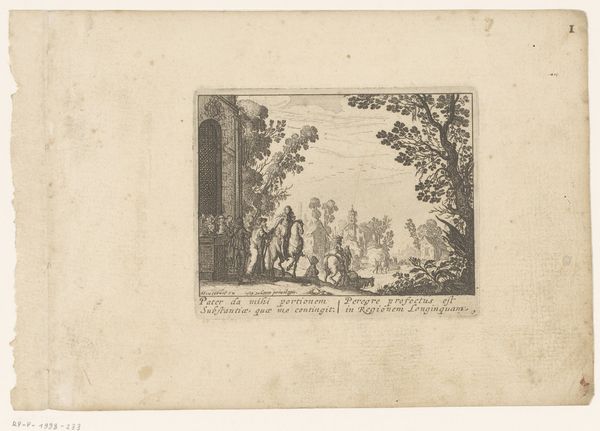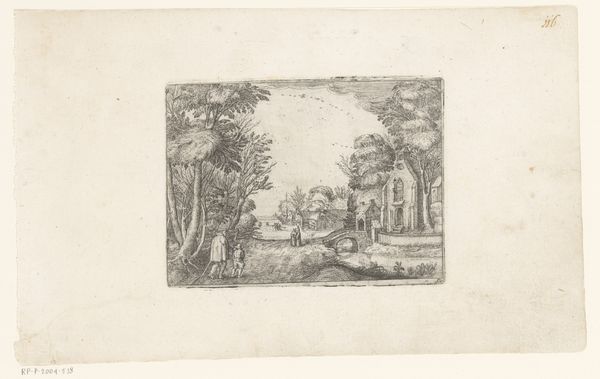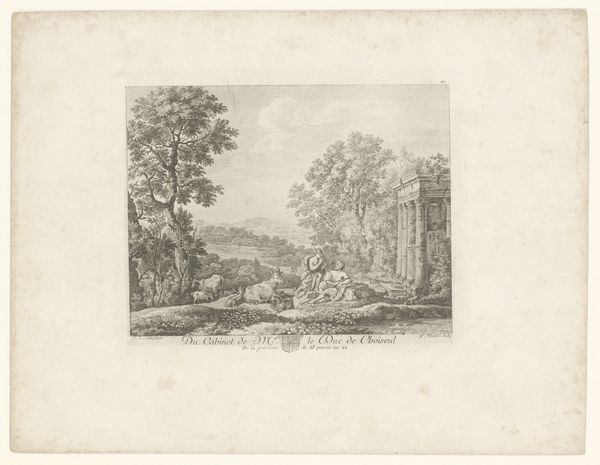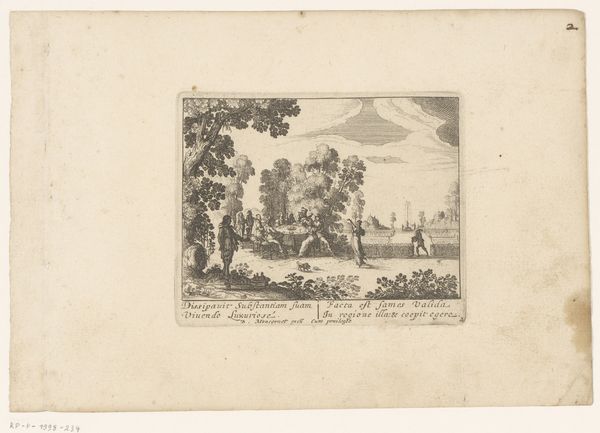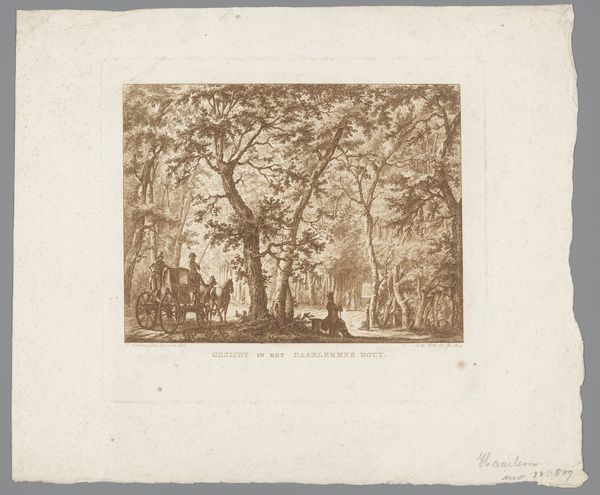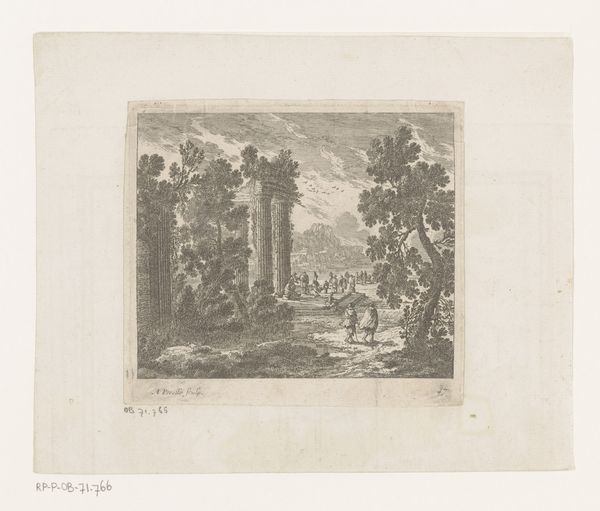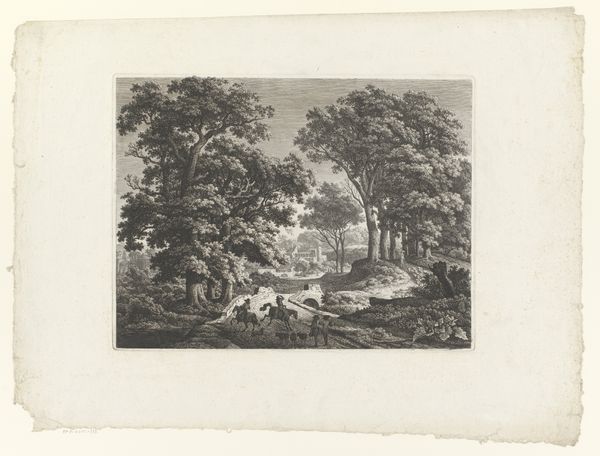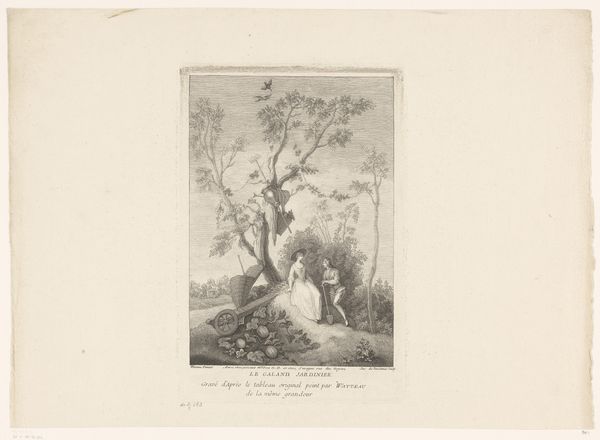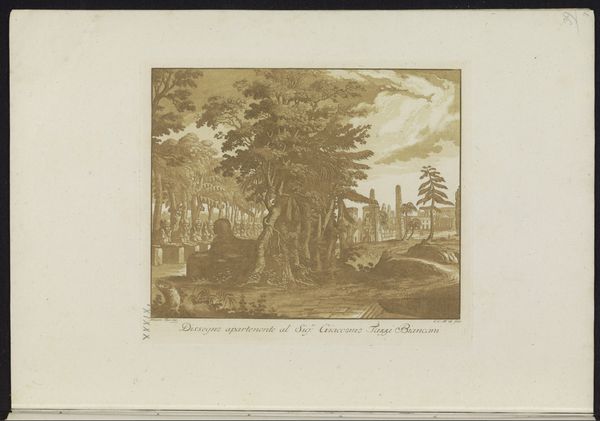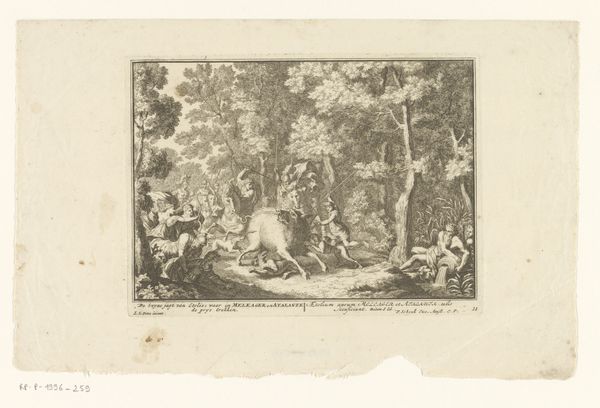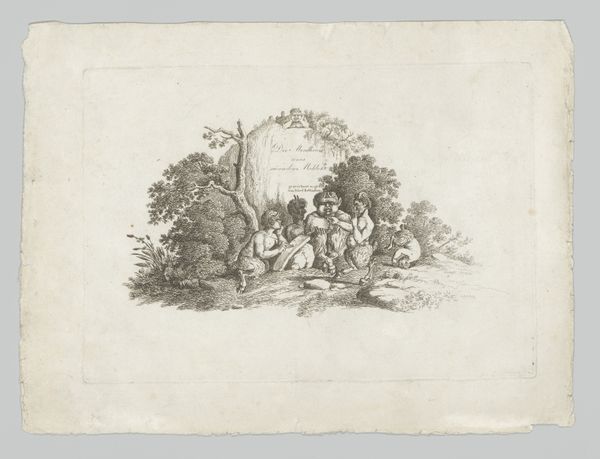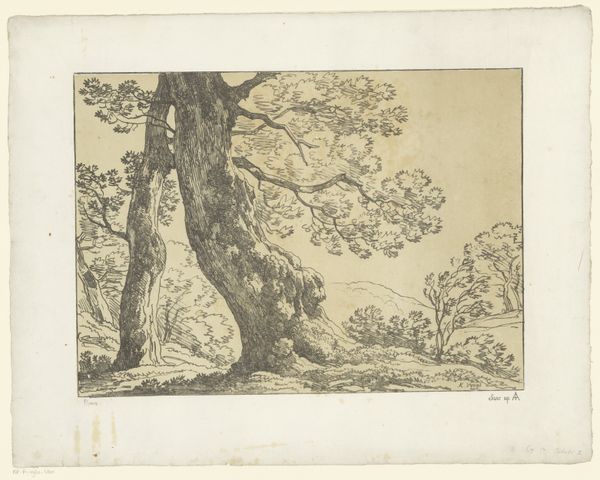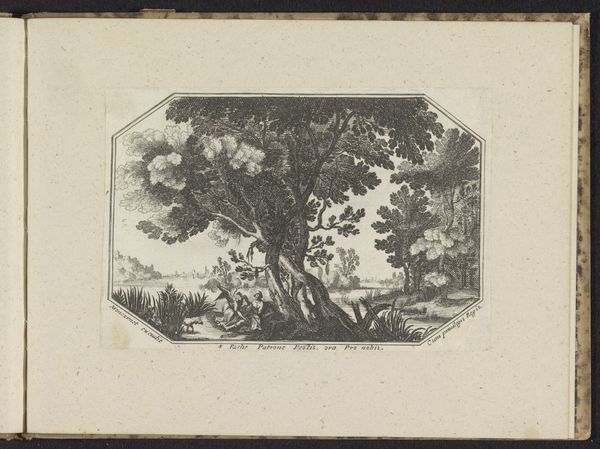
print, etching
#
narrative-art
#
baroque
# print
#
etching
#
landscape
Dimensions: height 77 mm, width 96 mm
Copyright: Rijks Museum: Open Domain
Curator: Here we have "Repentance of the Prodigal Son," a print by Nicolas Cochin, likely created sometime between 1620 and 1686. It’s currently held at the Rijksmuseum. Editor: My immediate reaction is one of quiet desperation. The etched lines, while delicate, convey a harshness. It's all stark contrasts and scraggly textures. The scene feels desolate. Curator: Given its probable date, the techniques employed are fairly typical of baroque printmaking: etching to achieve fine details and strong contrasts between light and shadow. Consider the labor invested in creating such a scene and disseminating its message. Each print required a skilled craftsman to reproduce Cochin’s composition, making the story of the prodigal son more accessible to a broader audience beyond the elite. The means of its reproduction are just as central as the original. Editor: Absolutely. But look at the visual cues: The wasted figure, humbled among swine, signifies spiritual decay and the symbolic loss of grace. This iconography speaks to themes of redemption. The dilapidated buildings could point toward themes of failed legacy, maybe. Curator: Note the use of readily available and inexpensive materials in contrast to traditional high art, as Cochin repurposes common printmaking processes for explicitly narrative purposes. Its impact on popular devotional practices, facilitated by widespread dissemination, would be crucial to understanding its relevance within its time. The value of such accessible artwork goes beyond simple aesthetics or elite circles of collectors. Editor: It underscores a cultural narrative that's persisted through centuries. The visual language remains remarkably potent, transcending socioeconomic bounds through a shared set of symbols understood across disparate social strata. It shows a visual continuity of how cultures process themes of sin, repentance, and reconciliation, even now. Curator: In a fascinating synthesis of production and interpretation, Cochin utilizes humble materials to create a powerful, widespread, and morally didactic tool. Editor: Indeed. Examining how artistic imagery can offer solace and instigate self-reflection among the masses, within historical and cultural contexts, allows for a profound sense of introspection, regardless of its method of distribution.
Comments
No comments
Be the first to comment and join the conversation on the ultimate creative platform.
